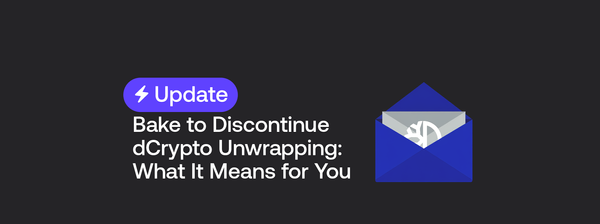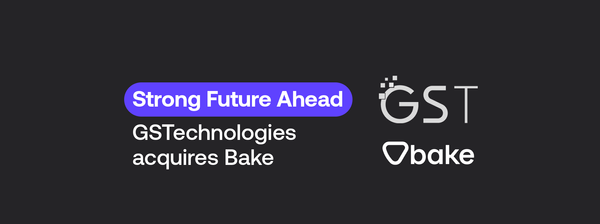Top 5 Blockchain Scalability Solutions for 2024
New year optimism brings hope and a critical shift in the world of blockchain as it's finally becoming truly scalable. This means faster, cheaper, and wider adoption for many new and exciting blockchain applications.
Groundbreaking scalability solutions are beginning to blossom, promising to address this long-standing challenge of blockchain and paving the way for broader adoption and more efficient applications.
Here are the top five scalability solutions reshaping the blockchain industry in 2024:
1. Layer 2 Rollup Solutions
Rollups are the newest and most promising solution on the blockchain scalability scene.
Imagine processing transactions off-chain (like on an express lane) and then reporting them back to the main chain in batches. That's what rollups do, boosting speed and dropping fees.
They are Layer 2 solutions that process transactions off the main chain (e.g., Ethereum or Bitcoin) and then post a “rolled-up” bundle of transactions back to the main chain for it to process as a single input. This allows for much higher transaction throughput, making transactions faster and cheaper.
Rollups come in two main types:
- Optimistic Rollups, which assume all transactions are valid unless proven otherwise
- Zk-Rollups, which use zero-knowledge proofs for transaction validity, bypassing the need for dispute resolution.
Examples:
- Arbitrum: An Optimistic Rollup solution designed to enhance transaction throughput and reduce fees while leveraging Ethereum's established security and decentralization.
- Optimism: Another Ethereum Optimistic Rollup solution with a robust ecosystem and unique governance model.
2. Sidechains
Sidechains operate as independent blockchains parallel to the main chain. They work similarly to rollups as they offload transactions from the main chain.
Think of sidechains as parallel highways to the main road. They handle transactions separately, freeing up space and speeding things up. They even have their own rules and features, making them more flexible.
However, as sidechains run their own consensus mechanisms, it is not necessary for the transaction data to be sent back to the main chain.
Sidechains are more autonomous than Rollup solutions and are generally more flexible than the main chain.
They are a perfect middle ground between the two solutions, allowing for experimentation with innovative features as well as offering faster confirmation times and lower fees.
Examples:
- DeFiChain: A Bitcoin sidechain that brings specific and optimized functionality for DeFi applications to the Bitcoin ecosystem.
- Polygon: A combination of Layer 2 and Sidechain technology, it enhances Ethereum scalability using a mix of sidechains and Plasma framework.
3. Interoperability
Interoperability addresses the challenge of scalability by enabling seamless communication and asset transfer between different chains.
Interoperability lets different chains talk to each other, sharing data and assets seamlessly. Imagine sending money between different bank accounts instantly – that's the power of interoperability.
Leading blockchain networks like Ethereum and Bitcoin still exist in silos. Their ecosystems are isolated from any innovations occurring on other chains, and all transactions within their ecosystem must occur on their main networks. This congests the network, slowing transaction times and increasing fees.
By creating interoperable solutions, it is possible to break down these silos. Sharing the load across multiple interconnected networks.
Examples:
- Polkadot: Enables different blockchains to transfer messages and value in a trust-free fashion, sharing their unique features while pooling their security.
- Cosmos: Aims to create an Internet of Blockchains, a network of blockchains able to communicate with each other in a decentralized way.
4. Payment Solutions
2024 could see the blossoming of cryptocurrencies designed to facilitate rapid, low-cost, and cross-border transfers.
Say hello to cryptocurrencies built for speed and affordability. These specialized coins, like XRP and XLM, are perfect for quick cross-border transfers, ideal for banks and individuals alike.
Built-for-purpose crypto remittance solutions like Ripplenet and Stellar Lumens enable real-time settlements in any currency. This ensures money is transferred almost instantly, regardless of location.
Such technology does come at the cost of decentralization, something many crypto purest are against. However, for financial institutions and banks looking for more efficient remittance options, crypto products like Ripplenet are a perfect solution.
Examples:
- XRP: The cryptocurrency at the heart of Ripplenet. Provides a high-speed, cost-efficient solution for global money transfers and a go-to choice for financial institutions looking to modernize international remittances.
- Stellar (XLM): Similar to XRP, XLM facilitates low-cost, cross-border transactions in seconds. However, unlike Ripplenet, Stellar caters to both individual users and large institutions.
5. Next-Gen Layer 1 Solutions
The most direct approach to solving scalability is the creation of new Layer 1 networks specifically designed to do so. Sometimes, building a whole new, super-efficient blockchain is the answer. These networks use innovations like sharding and special consensus mechanisms to handle many transactions smoothly.
Such solutions can implement new technologies like sharding and advanced consensus mechanisms in order to improve transaction processing and reduce network congestion.
This approach results in blockchains that can process transactions more efficiently and at a higher throughput compared to older networks.
Moreover, these innovative Layer 1 solutions often incorporate enhanced security protocols and robust decentralization practices. They not only offer a scalable infrastructure but also maintain the blockchain ethos of decentralization and security.
Examples:
- Avalanche: A highly interoperable network that employs an advanced consensus mechanism to achieve an ideal balance between scalability, security, and decentralization.
- NEAR Protocol: A developer-friendly network designed for building decentralized applications with high performance and simple user experience across multiple ecosystems.
Invest in the Leading Scalability Solutions
Keep on top of the latest trends in scalability throughout 2024 through Bake’s curated investment ideas and Smart Bundles.
Through Bake’s Smart Bundle options, you can optimize your exposure to the leading Scalability solutions on the market.

DISCLAIMER: Please note that the information on this blog and in any articles posted on this blog is for general information only and should not be relied upon as financial advice. Cake Pte. Ltd., Bake, UAB, and its affiliates (the “Cake Group”) are not licensed financial advisers. You may wish to approach your own independent financial advisor before making any decision to buy, sell or hold any product and/or digital assets mentioned in this blog.
Any views, opinions, references, assertions of fact and/or other statements are not necessarily the views held by the Cake Group. The Cake Group disclaims any liability whatsoever that may arise out of or in connection with such statements. Always do your own research before investing in any financial assets and consult a qualified financial advisor if necessary.




